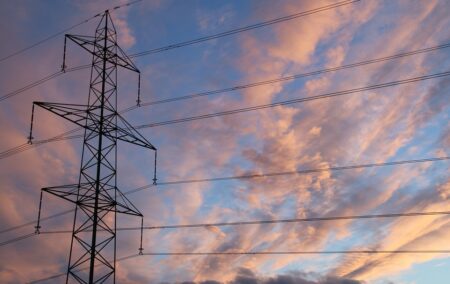The answer is yes. Last Tuesday, Pravin Gordhan, Minister of Public Enterprises, laid out his rescue plan for Eskom. It had some good points but did not inspire much confidence, mainly because of his refusal to tackle Eskom’s biggest problems – which are political.
It is strange to remember that, under apartheid, Eskom was one of the world’s most successful electricity utilities, producing the world’s cheapest electricity very reliably. It was behind the strong industrialisation of South Africa – which has now been reversed. The reason Eskom succeeded under apartheid and failed under the ANC is simply that the National Party government left Eskom alone, giving its engineers a simple brief – ‘Make sure we’ve got enough electricity and cover all your costs through electricity sales’ – whereas the African National Congress (ANC) used Eskom as a political tool.
South Africa has huge reserves of cheap, easily mineable coal of low quality. Under apartheid, Eskom built a series of big, standardised, ‘six-pack’ (six identical units) coal stations. They were built on schedule, on budget and with good contracting. They were financed on cheap debt (Eskom debt is essentially government debt and is therefore cheaper than private debt) and the debt was responsibly paid back out of revenue from electricity sales. The result was cheap, reliable electricity and an economically sound Eskom.
The ANC ruined this, so that we now have load-shedding, rising electricity prices (although still quite low by world standards) and a mountain of debt Eskom cannot repay. Under the ANC, Eskom failed to build stations when they were needed and ran out of electricity in 2007. It replaced qualified, experienced white engineers with unqualified, inexperienced black ones under ‘transformation’ and ‘affirmation action’ (also called ‘space creation’).
It hired far too many staff, so that Eskom now has twice as many employees as comparable utilities around the world, all earning big salaries. Under apartheid, Eskom’s coal power stations were built next to the coal fields, mined by the big majors (‘white monopoly capital’!). Coal of consistent quality was sent from the mine to the station by conveyor belt. Under the ANC, this changed to BEE coal procurement, where inconsistent coal was bought at high prices from little black-owned mines far away from the power stations. It was delivered by truck. The result was soaring energy costs and environmental destruction. Eskom compounded its problems by building Medupi and Kusile, two gigantic, badly designed, badly built, badly contracted coal stations, crippled with corruption, rising costs and late delivery.
Gordhan says he will address the problem of high coal costs and try to revert to the old system of dedicated coal mines near the stations. That’s good, if he can do it. He says electricity supply must always be ahead of demand, and that we must have ‘cost reflective electricity’. That’s good too. But he failed to address the gross over-manning at Eskom, and its huge wage bills. Remember that, when Eskom suggested its salaries should be temporarily frozen, Gordhan overruled it and it gave another big increase.
He plans to ‘unbundle’ Eskom into three separate entities: generation (power stations), transmission (which takes power from the stations to all parts of the country), and distribution (which sends it to final consumers). There is merit in having independent transmission – also called ‘the system operator’. I’d like an independent system operator that would buy power from generators on a strictly market basis, buying from the cheapest and most reliable suppliers. But I fear this will not happen. I fear the operator will be forced to buy very expensive, horribly unreliable solar and wind electricity, which will push up electricity prices and be a great burden on Eskom.
I also have a fear that this unbundling might be just another silver bullet, another magic solution to all our problems – which will end in more bureaucracy and high costs. Three separate entities at Eskom means three boards, each with highly paid, politically appointed board members.
Gordhan is wrong when he says we must follow the ‘energy transition’ of some countries overseas – the move to wind and solar grid electricity. Why must we follow failure? Wind and solar have been an expensive failure in every country that has adopted them, including Germany, Denmark, Australia and the UK, with soaring electricity costs and electrical instability. Our own renewable electricity programme (Renewable Energy Independent Power Producers Procurement Programme or REIPPPP), has been disastrous, forcing upon us the most expensive and the worst electricity in our history. Our Integrated Resources Plan, which calls for lots of wind and solar, is just plain stupid, as every experience in the real world shows.
What about Eskom’s R450 billion-rand debt? Gordhan was vague. The fact is that it must be paid or nobody would lend to us again. There are only two ways it can be paid: increased electricity prices or taxes. Either way, we pay. It is we who suffer from Eskom’s sins and the ANC’s follies and corruption.

